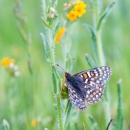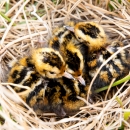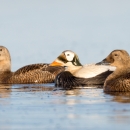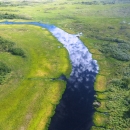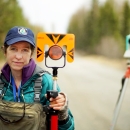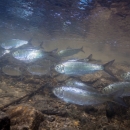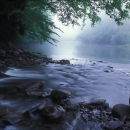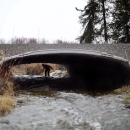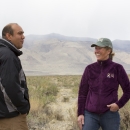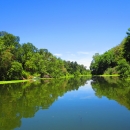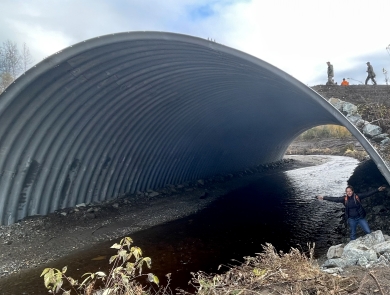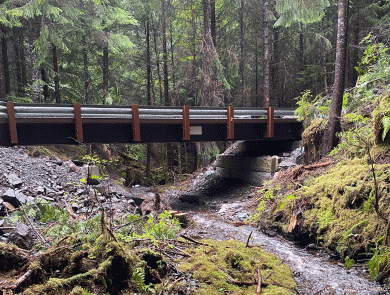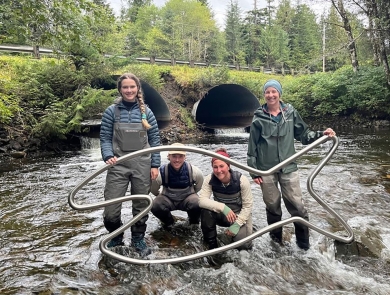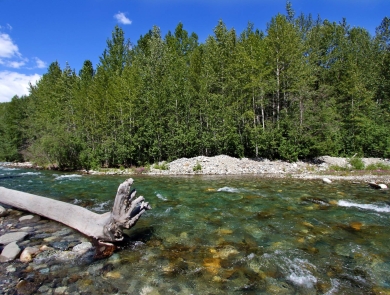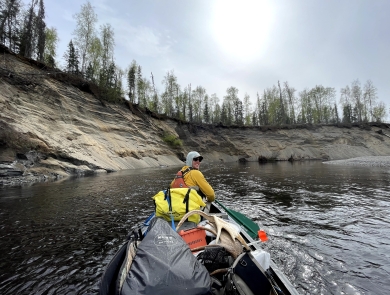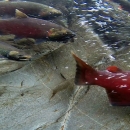About Us
The Southern Alaska Fish and Wildlife Field Office is composed of two offices, the Anchorage Fish and Wildlife Conservation Office and the Kenai Fish and Wildlife Conservation Field Office. Our staff work in an area that stretches from the from Southeast Alaska up through the Copper River Delta east of Cordova, north to the Alaska Range, and west through central and western Alaska, including the Yukon-Kuskokwim Delta, Bristol Bay, and Aleutian Islands. This area is home to seven federally endangered and threatened species, a wealth of wild fish, migratory birds, and mammals (including northern sea otters and Pacific walrus).
Our team of technical experts includes biologists and biological technicians, fisheries managers, a civil engineer and engineer tech, hydrologist, and contract specialists. Thanks to this team, we are able to complete our own in-house fish passage fish passage
Fish passage is the ability of fish or other aquatic species to move freely throughout their life to find food, reproduce, and complete their natural migration cycles. Millions of barriers to fish passage across the country are fragmenting habitat and leading to species declines. The U.S. Fish and Wildlife Service's National Fish Passage Program is working to reconnect watersheds to benefit both wildlife and people.
Learn more about fish passage designs and provide technical assistance across a large swath of Alaska.
What We Do
We work with partners towards a connected network of lands and waters in Alaska that support diverse, self-sustaining populations of wild, native fish that exhibit their natural variability in abundance, genetics, and life history. We provide technical assistance and funding/cost-share opportunities for habitat conservation through our Fish Passage, Partners for Fish and Wildlife, and Coastal Programs. We also work to reduce and eliminate threats to threatened and endangered species, marine mammals, migratory bird, and other wildlife.
Our Organization
Our Species
We work to conserve a variety of species, including anadromous fishes, migratory birds, Threatened and Endangered species, and pollinators. We also support efforts to detect, control and eradicate invasive species invasive species
An invasive species is any plant or animal that has spread or been introduced into a new area where they are, or could, cause harm to the environment, economy, or human, animal, or plant health. Their unwelcome presence can destroy ecosystems and cost millions of dollars.
Learn more about invasive species .
- Aleutian shield fern
- Alexander Archipelago wolf
- Chinook salmon
- Coho salmon
- Northern Sea Otter
- Steller's eider
- Short-tailed albatross
- Tufted puffin
- Wood bison
Visit Us
We co-located at the Bureau of Land Management’s Campbell Tract Facility, a 730-acre forested area bisected by Campbell Creek that is home to salmon, moose, black bears, brown bears, lynx, coyotes, snowshoes hares, and myriad migratory birds and raptors. Summer brings endless hours to hike and mountain bike miles of trails, or birdwatch. In winter, this is a great place to snowshoe, fat-tire bike, or cross-country ski. Our seasons offer endless outdoor opportunities. Here you can experience the midnight sun during summer and the northern lights during winter.


